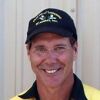Rob Leatham is probably the most successful, long-term competition shooter in the history of action shooting sports. He once famously said, “It’s not how fast you move — it’s how soon you get there ready to shoot.”
In the world of shooting performance, the compromise between speed and accuracy is a constant struggle for everyone who is serious about building skill. If you try to move smoothly, you may move too slowly, to the point that you’ve slowed.
If you move too fast, without managing your momentum, your precision will be compromised.
Understanding ‘Economy of Effort’
A fundamental principle we utilize in our teaching doctrine at the Tactical Performance Center is the law of “Economy of Effort.” The equation is as follows:
Economy of Effort + Precision of Movement = Performance Speed
This means using the “right amount” of effort versus the “least amount” of effort. The difference between these two phrases is how they are translated in the mind of the student. Whenyou hear, “least amount,” you automatically reduce your overall effort in an attempt to follow this.
This may lead to an increase in performance if you have a lot of excess muscle tension and jerkiness in your performance. However, it puts a limit to the performance possible in that the overall movement time or shooting speed is controlled by the amount of muscle contraction that is synched to the skill.
When you use the “right amount” of effort, it gives you the freedom to use more effort in certain parts of the performance in order to attain a higher level of overall performance.
Let’s take the draw at five to seven yards. You can move smoothly and attain a draw speed right around 1.0 – 1.10 seconds fairly consistently. You can break the 1.0 second mark as well.
But what about firing three shots in less than 1.0 second? If you want to get faster, you have to move faster. However, if you move faster, your precision starts to be affected.
The Race Track Analogy
You have to pay attention to everything you are doing. Using the “right amount” of effort, there are places where you can move faster and places where you need to ”put on the brakes” or “coast.” This is similar to driving a car on a racetrack. You can accelerate on the straight-aways and brake going into the turns and then accelerate coming out of the turns.
In our higher speed draw, there are places where you can accelerate the draw and places where you will need to be more precise in order to minimize the effects of momentum energy that will cause a “braking” effect in the muscles.
If you pay attention to moving your hand quickly when you can and then “coasting” and placing your hand precisely on the handgun, you can get the gun out of the holster quicker. If you pay attention to taking out the momentum during the final movement of the gun onto the target, you will be able to see your sights sooner and fire a precision shot sooner.
And, if you pay attention to the kinesthetic part of bringing the handgun up with the sights already aligned — what I term “sight alignment by feel” — you can shoot sooner because your gun is ready to go when you get to the area of the target you wish to shoot.
Keep the Water in the Glass
The same concept applies to shooting multiple targets. Get a glass almost full of water and move it from point to point as fast as you can go. Observe how the water gets thrown out of the glass as you try to stop it on each point.
Now, control the momentum. Accelerate as you move off the target and decelerate or “coast” as you come into the next target. There is no jerking the gun between the targets. Done properly, you will be able to increase your speed between targets without spilling the water and compromising your precision.
If you simply try to use the least amount of effort, you will limit your overall speed because your speed will remain constant regardless of the distance between targets.
If you trained in having the sights aligned by feel, along with proper grip and recoil management, you would be able to shoot sooner because the alignment of the sights would be completed before arriving at the next target.
Moving from point to point and shooting is another example of how to do things “sooner, not faster.”
As you approach your firing position, manage your body momentum, keeping in perfect dynamic balance, and arrive in position ready to fire the gun precisely on target.
A New Level of Performance
The same concept of “economy of effort” applies to all areas of performance, including recoil management, trigger control and speed, managing muzzle flip, movement into and out of positions, shooting on the move, etc.
“Smooth is fast” has its place — but it must be expanded upon in far greater detail if you wish to attain the highest levels of performance.
Think about doing things sooner, not faster. Use the right amount of energy, not the least amount of energy.












